How to Fix the MBR Error 1 on Windows?
MBR stands for Master Boot Record and it’s the first thing your computer goes through when you turn it on. The MBR error 1 appears during boot and they signal the corruption of the master boot record. The problem is sort of difficult to resolve as you are not able to access your operating system.

However, there have been many different methods used to resolve the problem and many of them were able to help users resolve the MBR error 1. We have prepared step-by-step instructions below so make sure you follow them to resolve the problem. Check it out below!
What Causes the MBR Error 1 on Windows
There aren’t many known causes of this problem and that is for certain. We were able to pin down this problem to only two possible causes and we recommend you check them out below. This might save you some time and you’ll be able to settle for a method more quickly!
- The boot order in BIOS is wrong – Something may have caused changes to your computer’s BIOS and it doesn’t boot from your main storage device anymore. You will need to change the boot order to make it look for an operating system on your main hard drive/SSD.
- MBR is broken – This is also a viable cause and repairing the MBR is something you will have to try to resolve the MBR Error 1. It may seem like a long procedure but it’s probably your only hope at this point.
Solution 1: Change the Boot Order in BIOS
The MBR error 1 often indicates that there has been a change from the default boot order and now your computer is trying to boot from a device that doesn’t have a booting procedure defined (such as a drive used only to store data). If that is indeed the case, you can easily resolve the problem by changing the default boot order in BIOS. Follow the steps we have prepared below to do that. Note that the exact steps can differ from one manufacturer to another.
- First of all, you will need to turn on or restart your computer. In some of the initial screens during boot, there should be a message indicating that you need to press a certain key in order to enter SETUP. Press the indicated key.

- If you failed to click the button during this screen, you will need to restart your computer. If you have succeeded, you should enter the BIOS Setup Utility. Once inside, take a look at the menu at the top and look for the Boot
- Alternatively, the entry might be named Boot Options, Boot Order, or similar. In certain cases, the boot options are located inside a different menu such as Other Options, Advanced BIOS Features, or Advanced Options.
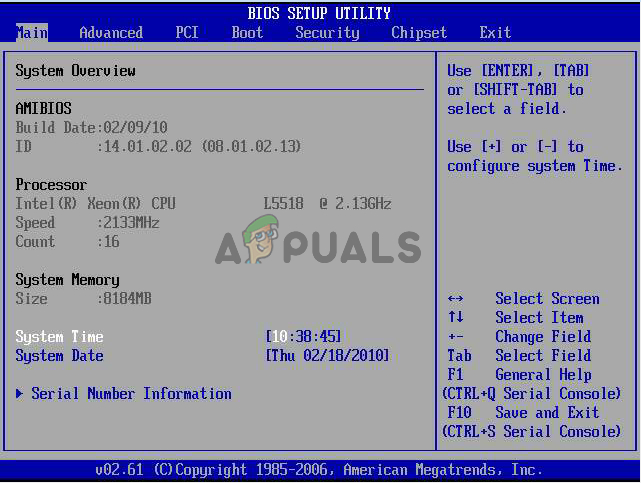
- Anyway, inside the proper menu, a list of devices should appear. The order of these devices indicates the order of where BIOS will look for an operating system or a recovery drive to boot your computer.
- The first device in this list should be the hard drive where the operating system is located. The bar at the bottom of the screen should provide instructions on how to change the order. In the picture below, you can use the ‘-‘ and ‘+’ keys to change the order.
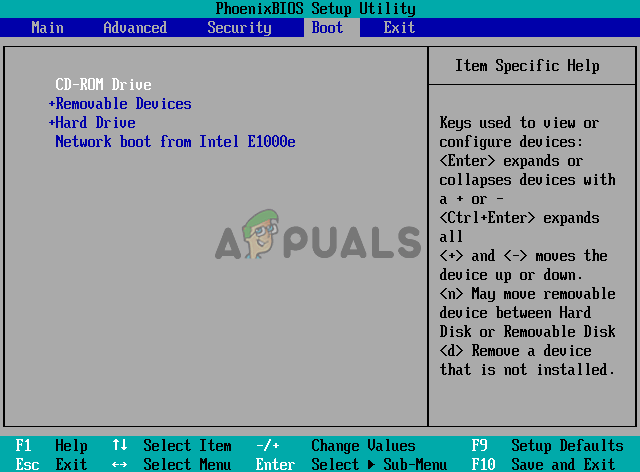
- After that, make sure you navigate to the Exit tab at the menu above and select the Exit Saving Changes The bottom bar might indicate a shortcut key for the same option. Select it and your computer should proceed to boot properly.
Solution 2: Repair MBR
If your booting order is set up properly, the other possible cause is that MBR is simply damaged and it needs to be repaired. Since you are not able to access your operating system, you will need to have a Windows installation DVD or USB ready.
For older versions of Windows, this is the drive you used to install Windows in the first place. If you are using Windows 10, there is a way to create a Windows recovery media using the Windows 10 Media Creation Tool. Note that the steps below need to be performed on a working computer. Follow the steps below to create it!
- First, download the Media Creation Tool directly from this website. Locate the file you have downloaded (MediaCreationTool.exe) in your Downloads folder and double-click to open it.
- Agree to terms and conditions after reading them by clicking the Accept button below. From the next screen, select the Create installation media (USB flash drive, DVD, or ISO file) for another PC option and click the Next
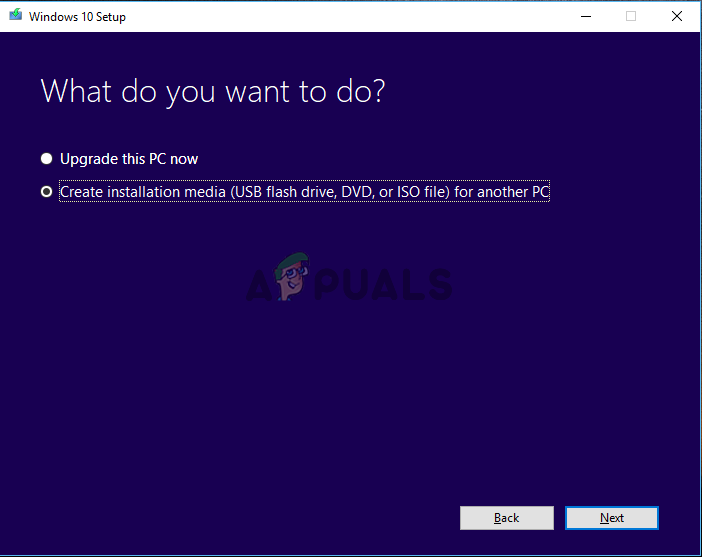
- From the next screen, make sure you choose the correct settings for the computer you are creating the installation media for. This includes the language, OS version, and architecture. Click Next after you set it up properly.
- After that, choose either USB flash drive or ISO file depending on whether you plan on storing the media on a USB drive or a DVD. Click Next and the tool will start downloading Windows 10.
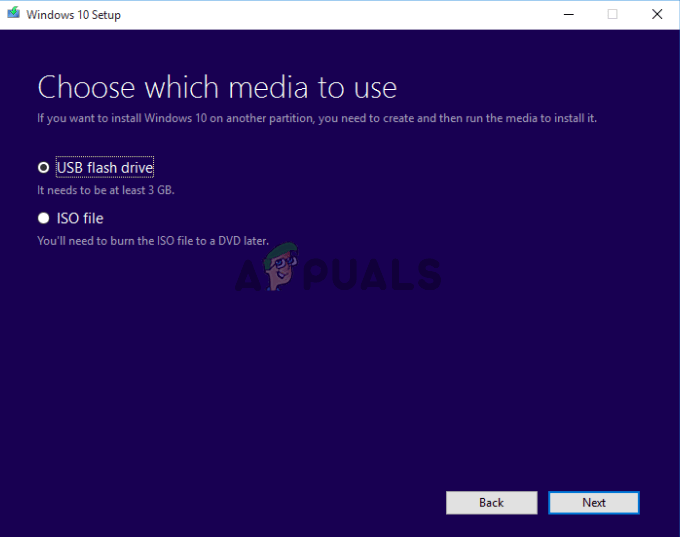
- If you have chosen to create an ISO file, you will be presented with the Burn the ISO file to a DVD Select the DVD drive you want to use before clicking the Finish button.
If you have the Windows installation media for the drive you have chosen, its time to perform the reparation of MBR. These steps will also differ based on which operating system the problematic computer uses so make sure you follow the instructions below accordingly!
Windows 7:
- Insert the Windows 7 installation DVD and restart your computer to boot from it. When you see the “Press any key to boot from CD or DVD” press any key.
- In the next screen, make sure you select the language and the keyboard layout you wish to use before clicking Next.

- At the following screen, set the radio button to Use recovery tools that can help fix problems starting Windows. Select the operating system from the list below before clicking Next. If it doesn’t appear, click the Load Drivers button below.
- In the System Recovery Options window, click on Command Prompt. Once Command Prompt opens, type in the commands below and make sure you click Enter after each one:
bootrec /rebuildbcd bootrec /fixmbr bootrec /fixboot
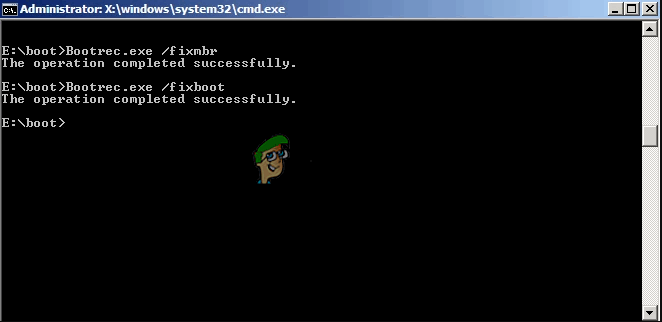
- Exit Command Prompt, remove the DVD and restart your computer. Check to see if the MBR error 1 still appears.
Windows 8, 8.1, and 10:
- Boot from your installation DVD or USB drive and click the Repair your computer from the Welcome Navigate to Troubleshoot >> Advanced Options >> Command Prompt to open it.
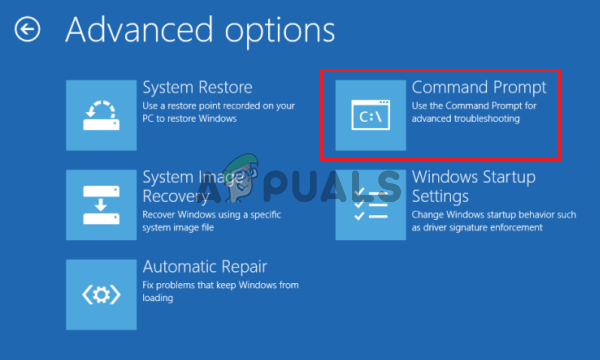
- Once Command Prompt opens, type in the command below and make sure you click Enter afterward:
bootrec /FixMbr bootrec /FixBoot bootrec /ScanOs bootrec /RebuildBcd
- Remove the DVD or the USB drive from the disk tray/USB port and type “exit” inside Command Prompt before clicking the Enter key. Restart your computer and check to see if the MBR error 1 error still appears.





